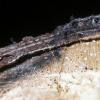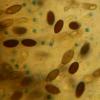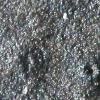
24-12-2025 17:08
Hulda Caroline HolteHello, I have found this propoloid ascomycete on

21-12-2025 09:32
Hello.A tiny ascomycete found embedded in wood in

21-12-2025 21:32
Pol DebaenstHello, Garden, Burgweg 19, Veurne, BelgiumOn 10/1

22-12-2025 23:38
Patrice TANCHAUDBonsoir, récolte sur un mur en pierre, apothéci

22-12-2025 00:47
Patrice TANCHAUDBonsoir, récolte à proximité du milieu dunaire
Biscognauxia? from Australia
Hans-Otto Baral,
06-09-2007 22:34
 Bon jour
Bon jouron a branch of a broad-leaved, Ficus-like tree in NE-Australia grew in association with Orbilia aff. vinosa a quite banal looking Xylariales resembling a Biscognauxia. The spores seem, however, unusual in their one end being distinctly truncate. Has anybody an idea what genus and perhaps species this is?
data: Sp. 9.5-12.5 x (5.3-)5.7-6 µm. Stroma 7-23 x 5-12 mm, 0.8 mm thick. HB 8609b.
Zotto
Jacques Fournier,
20-09-2007 09:06

Re:Biscognauxia? from Australia
Hi Zotto,
sorry for the delay, I was off when you sent your message.
I agree it is likely a Biscogniauxia. In this genus several species have two-celled ascospores, a big brown one, bearing a germ slit, and a small hyaline one which usually collapses with time and leaves a truncate end. This can be seen in Xylaria, Anthostomella and Nemania too. One of the ascospores on your photo still has its dwarf cell, quarter SE
Your taxon would need further data to be safely identified. If the stroma does have punctate ostioles surrounded by a low rim and if ascospores have a long germ slit, it might be B. uniapiculata (Penz. & Sacc.) Whalley & Laessoe, a common pantropical species.
All my best,
Jacques
sorry for the delay, I was off when you sent your message.
I agree it is likely a Biscogniauxia. In this genus several species have two-celled ascospores, a big brown one, bearing a germ slit, and a small hyaline one which usually collapses with time and leaves a truncate end. This can be seen in Xylaria, Anthostomella and Nemania too. One of the ascospores on your photo still has its dwarf cell, quarter SE
Your taxon would need further data to be safely identified. If the stroma does have punctate ostioles surrounded by a low rim and if ascospores have a long germ slit, it might be B. uniapiculata (Penz. & Sacc.) Whalley & Laessoe, a common pantropical species.
All my best,
Jacques
Hans-Otto Baral,
20-09-2007 16:42

Re:Biscognauxia? from Australia
Hi Jacques
tnaks a lot, that helps. Yes, the spores have a long germ slit, visible at the lower right spore on my photo, here again. Now I believe the spores are originally 2-celled. The ostioles are simple minute craters, please see photo.
Zotto
tnaks a lot, that helps. Yes, the spores have a long germ slit, visible at the lower right spore on my photo, here again. Now I believe the spores are originally 2-celled. The ostioles are simple minute craters, please see photo.
Zotto




 3127.gif
3127.gif